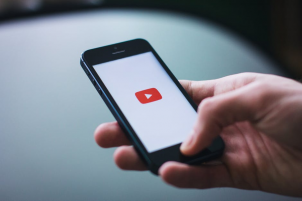We know that a picture can tell more than 1000 words, and video even more so.
It’s predicted that 74% of all internet traffic is video and by 2020 it will have risen to 82%. According to Wordstream, social video generates a massive 1,200% more shares than text and images combined. Our recent work with Speech Pathology Australia utilized the power of video and storytelling.
So earlier this year, when were engaged to help promote Speech Pathology Week, we looked no further than the power of video. The week, which aimed to share the ‘communication access’ message and highlight the life-changing work of ‘speechies’ across the country, lent itself perfectly to video content.
Our focus was on the personal stories of six individuals living with a communication disability. The result? Six video case studies that packed a resounding punch!
Take Margot.
She is 85 years old and lives in a Melbourne care facility. Her best friend is the elderly woman in the room next door, and every night, they sit together at dinner. However, until recently, they had never shared a simple conversation. Both women are still in full possession of their mental faculties. The problem is that Margot is physically unable to speak loudly and that her friend is hard of hearing.
Enter speech pathologist Olga Birchall, who introduced Margot to an electronic voice amplifier that enabled the friends to talk to each other.
This powerful two-and-a-half-minute video case study has clocked over 56,800 views on Facebook since being posted, and has amassed over 835 reactions, 200 shares, and 120 comments!
The videos shared over the week received over 168,000 views and 17,000 people engaged with at least one case study. It’s a timely reminder that, in recent times, powerful and impactful video content has become the jewel in the crown of social networking content.
The statistics are certainly there to back these theories up …
- According to Wyzowl statistics, 98% of users say they’ve watched an explainer video to learn more about a product or service.
- Meanwhile, HighHQ suggests 78% of people watch videos online every single week!
- The social media platform Snapchat launched in 2011, boldly placing video content at its very heart. It was a move that paid dividends, with its user base growing by 50 million daily active users last year alone.
- Other social juggernauts have embraced video content as a means of helping drive more traffic and engagement, with Facebook adding 360-degree videos and Facebook Live, and Twitter acquiring Periscope.
- Instagram video stories have exploded (and are arguably responsible for eating significantly into Snapchat’s slowing user base),
- YouTube continues to be the second most popular social networking site in the world, and;
- Even LinkedIn is coming to the party by introducing a feature that allows users to create videos highlighting their professional achievements.
Perhaps the boom of video content is a consequence of our media-driven culture: videos tell us a story, offer us easily digestible content and save us the need to read anything…
Whatever the reason, it’s clear the opportunities associated with promoting an organisation’s message via the means of video are endless. Emotional, funny, creative videos that tell a genuine story have the potential to go viral in minutes. After all, thanks to the delivery of the very human story, more than 56,000 people are now aware of Margot, her incredible journey and are more familiar with the work of speech pathologists.
If you want to know more about how video can work for you, contact Pesel & Carr on 9036 6900.


